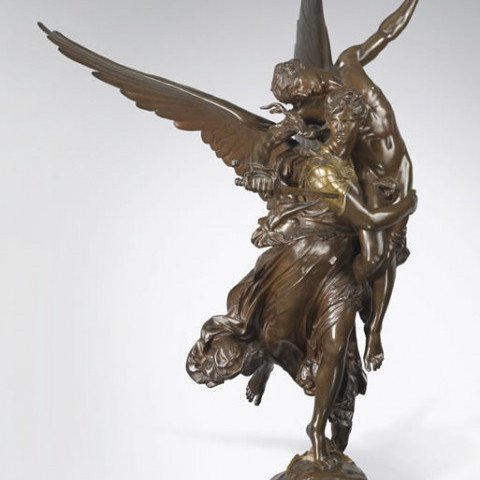Mercié's sculpture received tremendous public and critical acclaim when it was exhibited in 1874. In his review of the Salon of that year the critic, Jules-Antoine Castagnary observed: "While monachrists quarrel over the debris of our battered fortunes, and our statesman go through their gymnastics and exhibit indifference to everything save their personal ambition, there exists a young sculptor who has undertaken to speak directly to our nation and to console our people." A few years later, an American visitor went so far as to claim: "No effort of French genius since Sedan- no poem, romance, oration, or work of art has given so much solace to the defeated nation as this statue."
The model earned Mercié a Medal of Honor at the Salon of 1874, and was purchased by the city of Paris for 12,000 francs. It was cast in bronze by Thiebaul Freres for 8,5000 francs and shown at the Salon the following year. Gloria Victis was originally erected in the Place Montholon, Paris, but is now preserved in the Musee du Petit Palais.
The plaster model was shown again at the 1879 Exposition Universelle, where it won a grand prize. Other large bronze casts are located in Niort (1881), Agen (1883), Bordeaux (1885), Chalons sur Marne (1890-91), Choler (1901). and Copenhagen (1906).
In the recent catalog for the exhibition Rodin Rediscovered (National Gallery of Art, Washington D.C. 1981), Anne Pingeot noted that the Barbedienne Foundry was authorized to make reductions of Gloria Victis in May 1877 on the condition that the city of Paris received the largest cast and the model be returned intact to the city. Three reductions were produced in 1879. In 1888 the Barbedienne catalog offered it in its original size and in three reductions; in the next year, in four reductions, and in 1900 in seven reduced sizes, which demonstrate the sculpture's enduring appeal.
Source: askart.com

